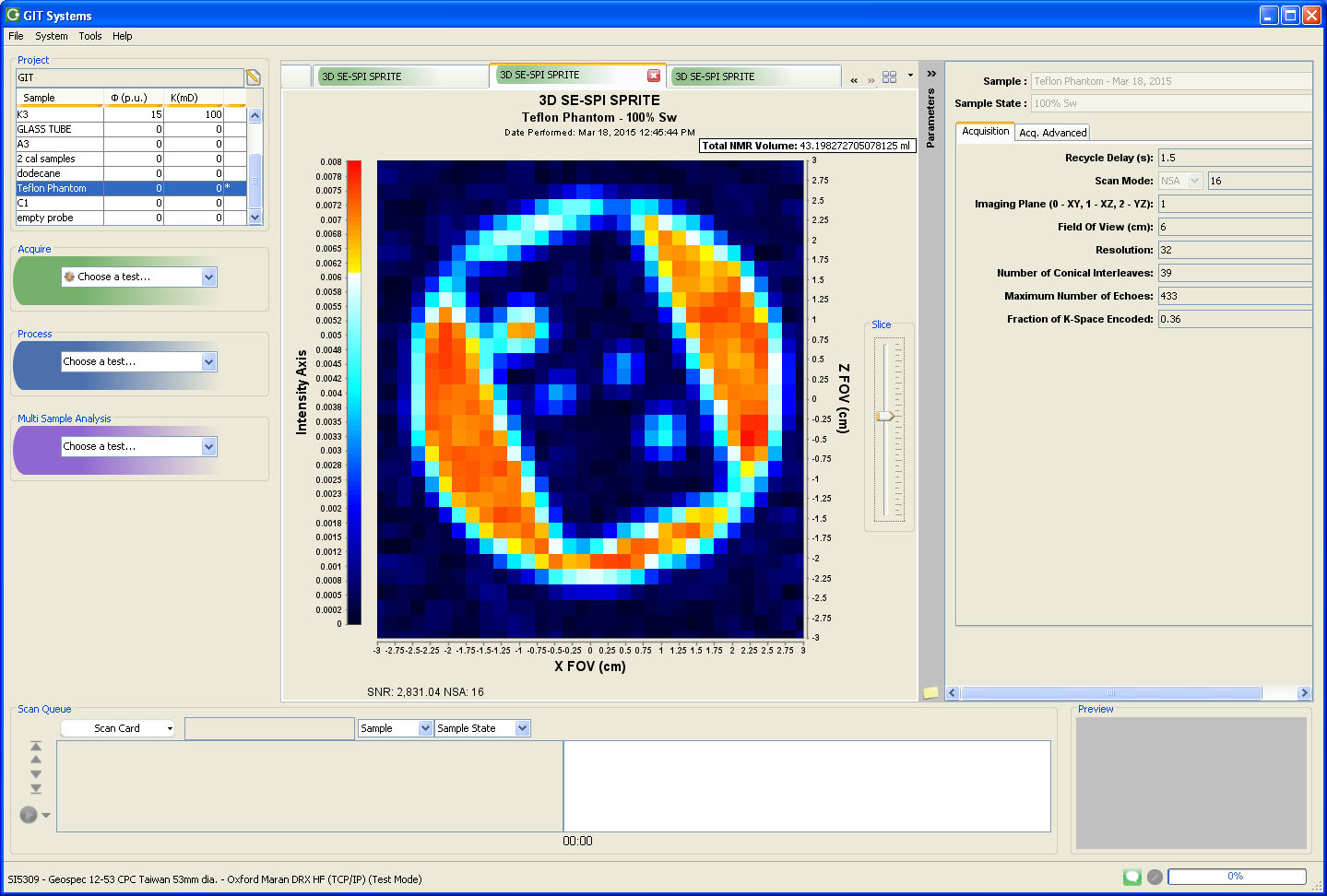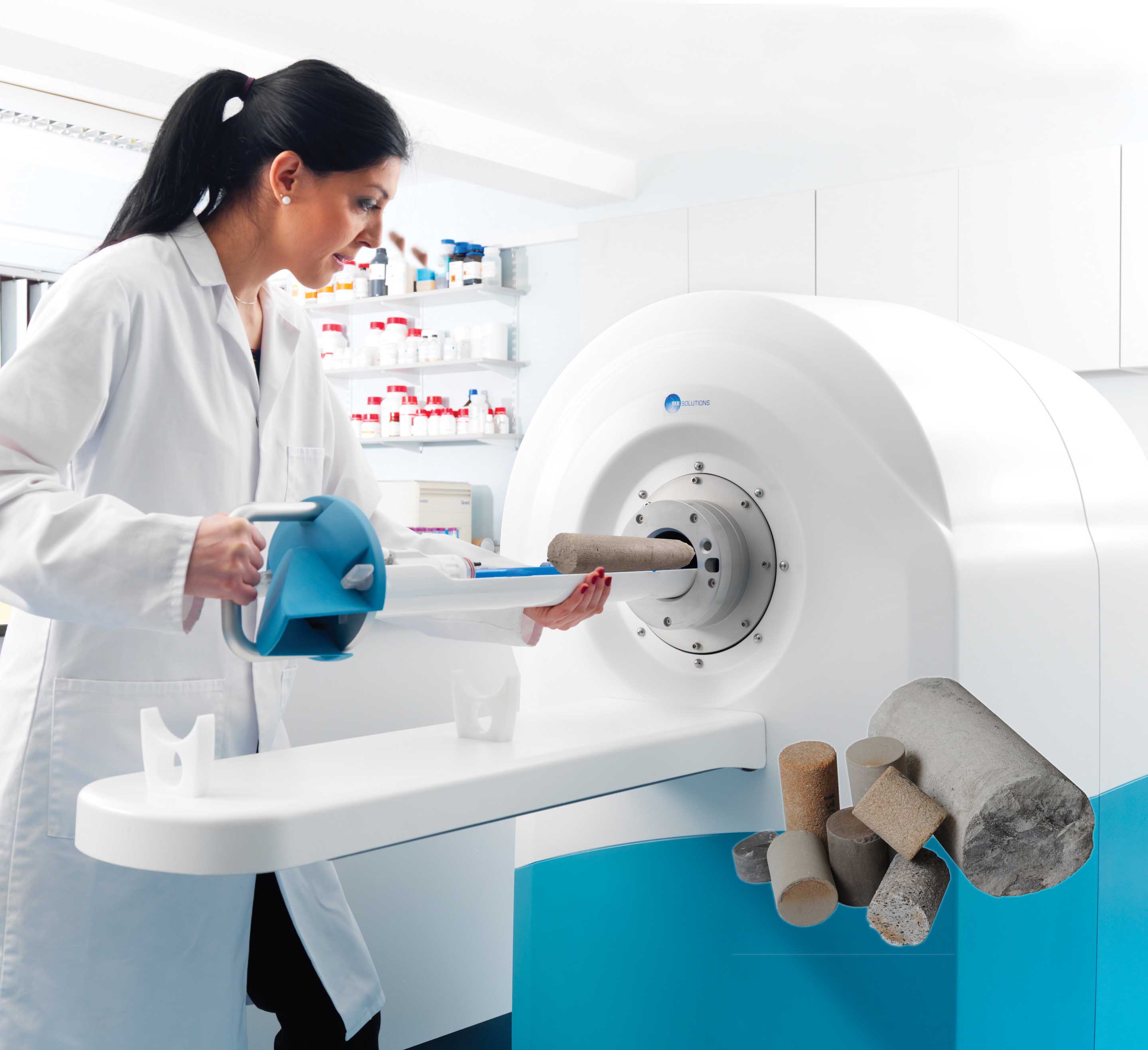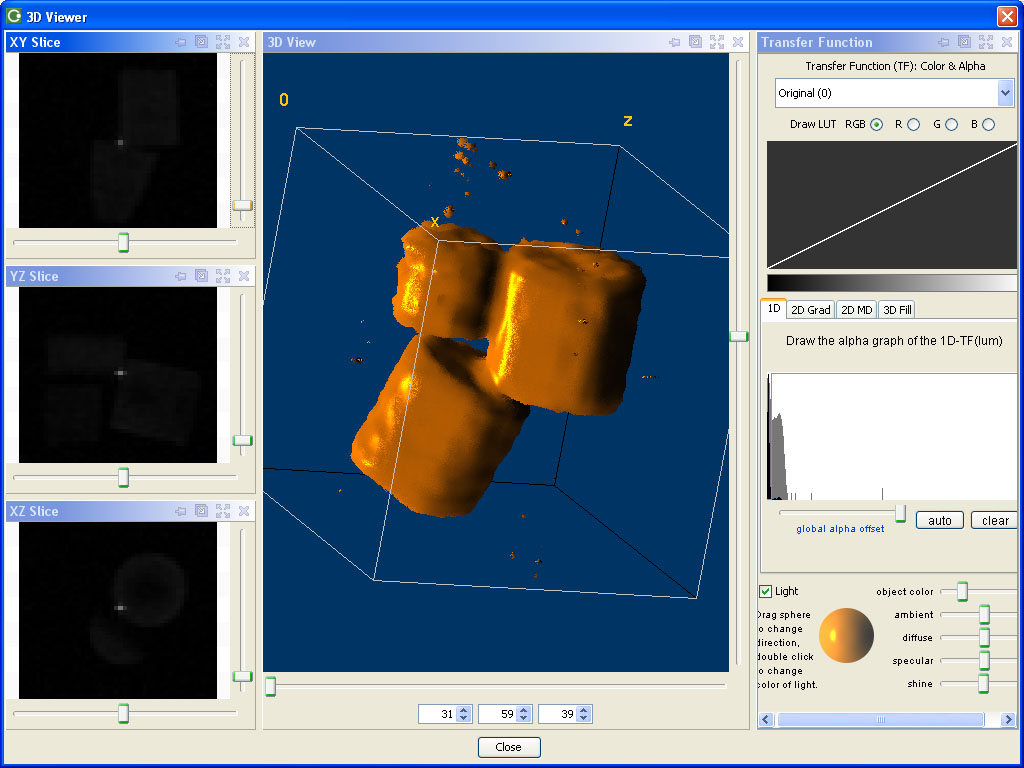Rock Core Imaging
Complete the reservoir puzzle with an ImaCoreTM 3D imaging system
The ImaCore 3017, 3D rock core imaging system is the result of a partnership between Green Imaging Technologies (GIT), an established leader in nuclear magnetic resonance (NMR) rock core analysis software, and MR Solutions, leader in magnetic resonance imaging (MRI) instruments. This partnership has resulted in a powerful MRI rock core instrument with an easy to use, yet robust user interface.
In general, rock core analysis is an exercise in providing measured data, but equipment limitations can require that the final analysis involve a theory of what is happening at the pore level. By using higher field MRI instrumentation, limitations of resolution are virtually removed, so one can bolster the theoretical with actual images of all the fluid present in the rock, and thus the pore network itself. When standard NMR rock core technologies, or other technologies, reach the limit of the answers they can provide, ImaCore will allow users to go further and see more of the rock core. ImaCore will be a key tool for revealing the missing pieces and completing the reservoir puzzle.
ImaCore provides an adjustable field of 0.1 to 3 T in a stable, cryogen free imager, combined with robust 3D imaging software. Users can quickly and easily obtain high resolution three dimensional (3D) images of all the fluid in the sample. Sample sizes can be standard 1” or 1.5” core plugs, or full 3” or 4” diameter core. The ImaCore flexible instrument design also allows for long core studies, and lends itself well to the use of flow cells within the instrument to perform flow studies. The resolution possible with the higher field allows for viewing of the flow front in real time. In addition to 3D imaging capabilities, GIT software provides access to a full suite of core analysis measurements such as pore size distributions, diffusion, permeability, capillary pressure and relative permeability.
| Superconducting Magnet | • High performance • High homogeneity • Stable • Almost no fringe field |
| Cryogen Free Magnet | • No need for liquid Helium • No Quenching • Dry Magnet |
| Compact & Light | • Small footprint • ~220Kg for 3T |
| No Special Room Requirements | • No need for quench pipes • No Faraday cage • No special floor needed |
| Variable Field Strengths | • From 0.1T to 3.0T (Rampable) • Systems can operate at variable strengths |
Software for all user levels
The ImaCore 3D Imaging System comes complete with GIT Systems 3D Imaging software. This software simplifies the acquisition and viewing of images in 3D space. Flow studies can be viewed in real time in 3D allowing
users to see the flow front interacting with the entire pore network.
GIT Systems 3D Imaging evolved from a range of products designed to provide both lab technicians and research scientists with a robust, yet easy to use interface to NMR and MRI instrumentation. The 3D Imaging software package builds on the foundation of the industry leading GIT Systems line of products, which have revolutionized how users acquire and process NMR and MRI data.
The 3D Imaging software provides access to NMR applications such as fluid mobility, saturation, porosity, wettability studies, shale analysis, and capillary pressure. It also adds a full suite of 3D acquisitions, processing and viewing capabilities.
Includes the following imaging pulse sequences:
• 2D spiral SE-SPI
• 2D spiral SPRITE
• 3D conical SE-SPI
• 3D conical SPRITE
• 1D SE-SPI and SPRITE profiles
• 1D spatial T2
• 2D spatial T2
• Out of volume suppression for long cores or profiles
• Slice selection for T2
For those users who wish to build their own pulse sequences, the GIT App Builder is packaged with the system. This product is a pulse sequence development tool, which allows users to develop, test and then deploy pulse sequences to the GIT Systems software. For imaging applications, the App Builder is packaged with both the 2D Spiral and 3D Conical gradient routines, allowing users to more quickly develop their own sequences.


